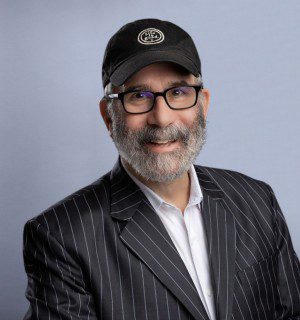News and Insights
Medicine and Hope Are Allies in Care
July 15, 2019
In our mandate to provide regulated information, and physicians embracing an “ideology of the right to know,” let’s not suffocate people’s hope.
For centuries, scientists have pursued treatments and cures for pressing and frightening illnesses. Throughout that time, we have called upon shamans and mystics, spiritual healers, pharmacists, physicians and scientists to conjure herbs, vitamins and supplements – chemicals and biologics.
Relying on intellect and knowledge, we embrace science and molecules that can be patented, tested, peer-reviewed and approved by third-party sources. However, as I look at the narratives of those who live and those that die – the people we seek to help and heal – I see within product innovation and the provider approach chinks in our armor. I see the too often-untapped human element that transforms marvelous medicines into people’s survival miracles. I see something missing from within the drug research, discovery and review process. I see how thoughtful communication can be used to create hope and avoid hype. For communication defines how innovation can bring hope to humanity. Hope remains one of the most under-appreciated elements in the patient-treatment process.
I was an agency account lead when Hoffmann-La Roche introduced the first biologics for the treatment of cancer – alpha interferon. The launch activities included a New York City media briefing. The speaker line-up included the best and the brightest researchers – including Dr. Jerry Groopman, the now Dina and Raphael Recanati Chair of Medicine at Harvard Medical School, Chief of Experimental Medicine at Beth Israel Deaconess Medical Center. Groopman is an outstanding scientist who has grappled for years with the role “hope” plays in healing.
This weekend, I revised Groopman’s outstanding volume, The Anatomy of Hope – How People Prevail in the Face of Illness. The book recounts his journey into medicine. The challenges physicians face as they look into the stares of people they treat with life-threatening illness and chronic disease. The physician’s hunger for information and how the “ideology of the right to know,” can also suffocate patient hope. It’s the story of a great physician/scientist trying to balance in his passion for the lab and patient care, with the universe we cannot see or touch.
“I understand hope as an emotion made up of two parts: a cognitive part and an effective part. When we hope for something, we employ, to some degree, our cognition, marshaling information and data relevant to a desired future event. If…you are suffering with a serious illness and you hope for improvement, even for a cure, you have to generate a different vision of your condition in your mind. That picture is painted in part by assimilating information about the disease and its potential treatments.
“But hope also involves what I would call affective forecasting–that is, the comforting, energizing, elevating feeling that you experience when you project in your mind a positive future. This requires the brain to generate a different affective, or feeling, state than the one you are currently in.”
Jerome Groopman, The Anatomy of Hope – How People Prevail in the Face of Illness
Though my career journey, as combat medic, health policymaker, health communications professional, I embraced (and will continue to respect) orders and legal, medical and regulatory direction. Along with my rewarding life in heath PR, as an ordained rabbi, called upon to visit the ill and very ill, I find myself walking hospital hallways and being welcomed into people’s homes, listening, comforting and, yes, hoping for their recovery and return to health.
In the past 30 years, I have been privileged to help bio-pharmaceutical companies introduce scores of new medicines into the marketplace for lifestyle and medical conditions. Today, in my leadership role at Finn Partners, I see my colleagues around the world dedicate themselves – with incredible heart and smarts – to ensure balanced, accurate information is shared so that people – patients, physicians, payers and advocates – can make informed decisions on next steps. I remain amazed at how many obstacles exist that diminish quality care and people’s – both physician’s and patient’s hope – from challenges to accessing medical records as people journey from one medical institution to another to switching people’s medication for no apparent reason to gaining sufficient talk time with their doctor to understand what is happening with their medical condition.
It’s frustrating. Yet, let us not despair. Let’s be optimistic, for medicine and hope are allies in healing. Communication is not separate from the collective mission to heal. Communication is hope’s bridge that unites science with care, and physicians and patients with their inner fire to heal and be healed.
